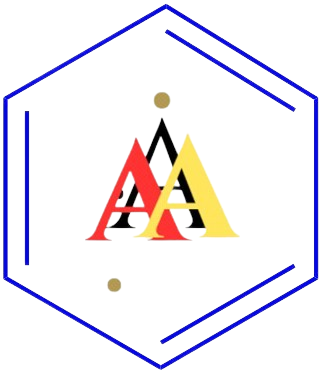Learning Approach for Enhancing Students' Creativity
DOI:
https://doi.org/10.71289/wrycf010Keywords:
creativity, project-based learning, mind mapping, inquiry, critical thinkingAbstract
Creativity is an ability that students must have to face the challenges of the 21st century. In education, creativity is needed to help students understand abstract concepts, solve problems and create innovative ideas. This article aims to identify various effective learning approach strategies to stimulate students' creativity and create an inspiring and productive learning atmosphere. The Search, Appraisal, Synthesis and Analysis (SALSA) approach is used. The results show that several methods, such as mind mapping, Project-Based Learning (PjBL), critical thinking, and guided inquiry, positively impact student creativity. PjBL was considered the most effective of all the methods studied due to its holistic and contextual approach, providing meaningful and in-depth learning experiences. This study recommends the implementation of PjBL, supported by other strategies such as mind mapping, to create innovative learning relevant to students' needs.
References
Aziz, R., Maimun, A., Hamid, A., Masturin, & Efiyanti, A. Y. (2025). An exploration of students' creativity through a mixed-methods study in the classroom. Journal of Education and Learning, 19(2), 650–657. https://doi.org/10.11591/edulearn.v19i2.21649
Bara, A. K. B. (2012). Membangun Kreativitas Pustakawan Di Perpustakaan.
Iqra’, 06(02), 40–51. http://repository.uinsu.ac.id/768/1/vol.06no.02 %286%29.pdf
Barrow, L. H. (2010). Encouraging Creativity with Scientific Inquiry. Creative Education, 01(01), 1–6. https://doi.org/10.4236/ce.2010.11001
Fatmawati, Gusnia Rindiani, Natasha Oktaviany, Syahrial, S. N. (2022). Meningkatkan Kreativitas Belajar Siswa Menggunakan Model Pembelajaran Project Based Learning pada Mata Pelajaran IPA di Kelas V SD Negeri 34/I Teratai. As-SABIQUN, 4, 252–264.
Grant, M. J., & Booth, A. (2009). A typology of reviews: An analysis of 14 review types and associated methodologies. Health Information and Libraries Journal, 26(2), 91–108. https://doi.org/10.1111/j.1471-1842.2009.00848.x
Hidayah, N., Ashadi, & Rahardjo, S. B. (2015). Pembelajaran Inkuiri Terbimbing Berbantuan Lks Untuk Meningkatkan Aktivitas, Kreativitas, Dan Hasil Belajar Pada Materi Hidrolisis Garam. Jurnal Inkuiri, 4(4), 61–69.
Lou, S. J., Chou, Y. C., Shih, R. C., & Chung, C. C. (2017). A study of creativity in CaC 2 steamship-derived STEM project-based learning. Eurasia Journal of Mathematics, Science and Technology Education, 13(6), 2387–2404. https://doi.org/10.12973/EURASIA.2017.01231A
MAN 3 Jakarta pusat. (2023). Implementasi Model Cooperative Learning melalui Pendekatan Inkuiri Terbimbing Metode Eksperimen Kimia Terapan Terhadap Kreativitas Siswa pada Materi Redoks. 2(2), 1–7.
Purwati, P., Sunarno, W., & Utomo, S. B. (2018). Pembelajaran Analisis Kimia Menggunakan Metode Inkuiri Terbimbing Dan Inkuiri Bebas Termodifikasi Untuk Meningkatkan Hasil Belajar Ditinjau Dari Kreativitas. INKUIRI: Jurnal Pendidikan IPA, 7(2), 182. https://doi.org/10.20961/inkuiri.v7i2.22970
Rohani, A. (2023). Investigating the simple and multiple relationship between critical thinking and learning styles and creativity among high school students in Ahvaz. Social Determinants of Health, 9, 1–10. https://doi.org/10.22037/SDH.V9I1.43887
Setiawaty, S., Lukman, I. R., Imanda, R., Sudirman, S., & Rauzatuzzikrina, R. (2024). Integrating Mobile Augmented Reality Applications Through Inquiry Learning To Improve Students' Science Process Skills and Concept Mastery. Jurnal Pendidikan IPA Indonesia, 13(1), 90–102. https://doi.org/10.15294/jpii.v13i1.48891
Simatupang, A. (2021). Hubungan Motivasi Belajar Dengan Hasil Belajar Siswa Pada Mata Pelajaran Kimia Di Sma Negeri 2 Kota Jambi. SECONDARY: Jurnal Inovasi Pendidikan Menengah, 1(3), 199–205. https://doi.org/10.51878/secondary.v1i3.346
Zakarya, Hafidz, Martaputu, H. N. (2022). Efektivitas Penggunaan Metode Mind Mapping Untuk Meningkatkan Kreativitas Siswa Dalam Pembelajaran. Students' Difficulties at Elementary School in Increasing Literacy Ability, 4(1), 1–12.





